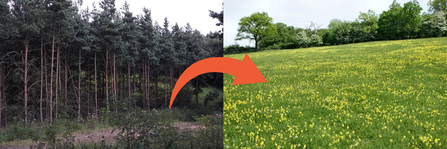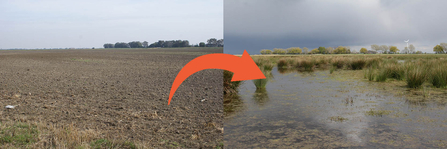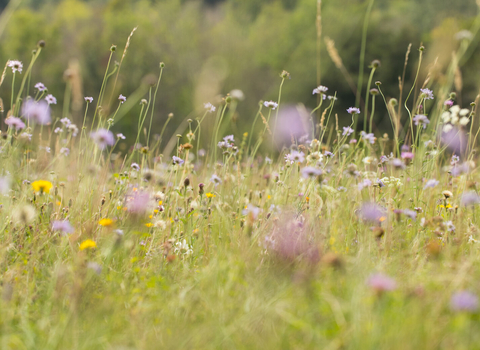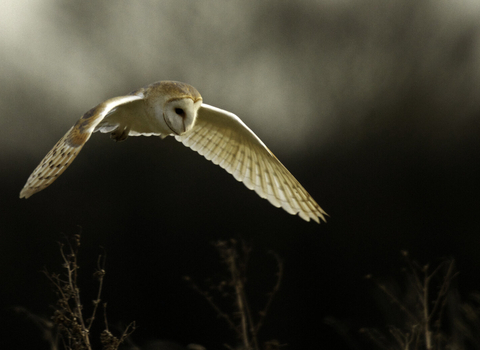We know how to help nature recover
We don’t just manage nature reserves, we look for opportunities to make them bigger, better and more connected. Sometimes this means buying former agricultural land or even conifer plantations and transforming them so wildlife can return and flourish.
From conifers to cowslips
Walk through Robert’s Field nature reserve on a spring morning and you will be surrounded by cowslips. It’s hard to believe that the meadows of this nature reserve were once a dark conifer plantation where little else could survive.
The battle to save Robert’s Field had been lost in the 1960s when it was planted with conifers. But the Trust knew it had potential and thirty years later bought the land.

Robert's Field before and after (c) Barrie Wilkinson
The removal of conifers was a bold and ambitious plan. It involved the felling and complete removal of the trees including the roots. Then using green hay to re-seed the soil with flowers and grasses. The plan worked.
Nature has recovered at Robert’s Field. Amongst the flowers are five species of orchid and the 33 species of butterfly include silver-washed fritillary.
Return of the wild fen
Wild wet fenland once covered vast swathes of south Lincolnshire. Most of it was drained centuries ago.
The evocative call of cranes were long gone. As were with the booms of bitterns and drumming of snipe. The natural sounds of the landscape had been silenced. The few nature reserves that survived were small and isolated until the Trust bought an arable farm and renamed it Willow Tree Fen.
Although it remained a farmed landscape with cattle grazing replacing the wheat and beans, water was allowed to return, and with it came the wildlife.

Willow Tree Fen before and after (c) Barrie Wilkinson
Since the Trust bought the land in 2009, over 1,100 species have been recorded. The first common spotted orchids appeared in 2018, shelduck and snipe returned as a breeding species in 2019, and in 2020, with the extra solitude created by lockdown, a pair of cranes nested. They successfully raised the first crane to be born in Lincolnshire in 400 years.












